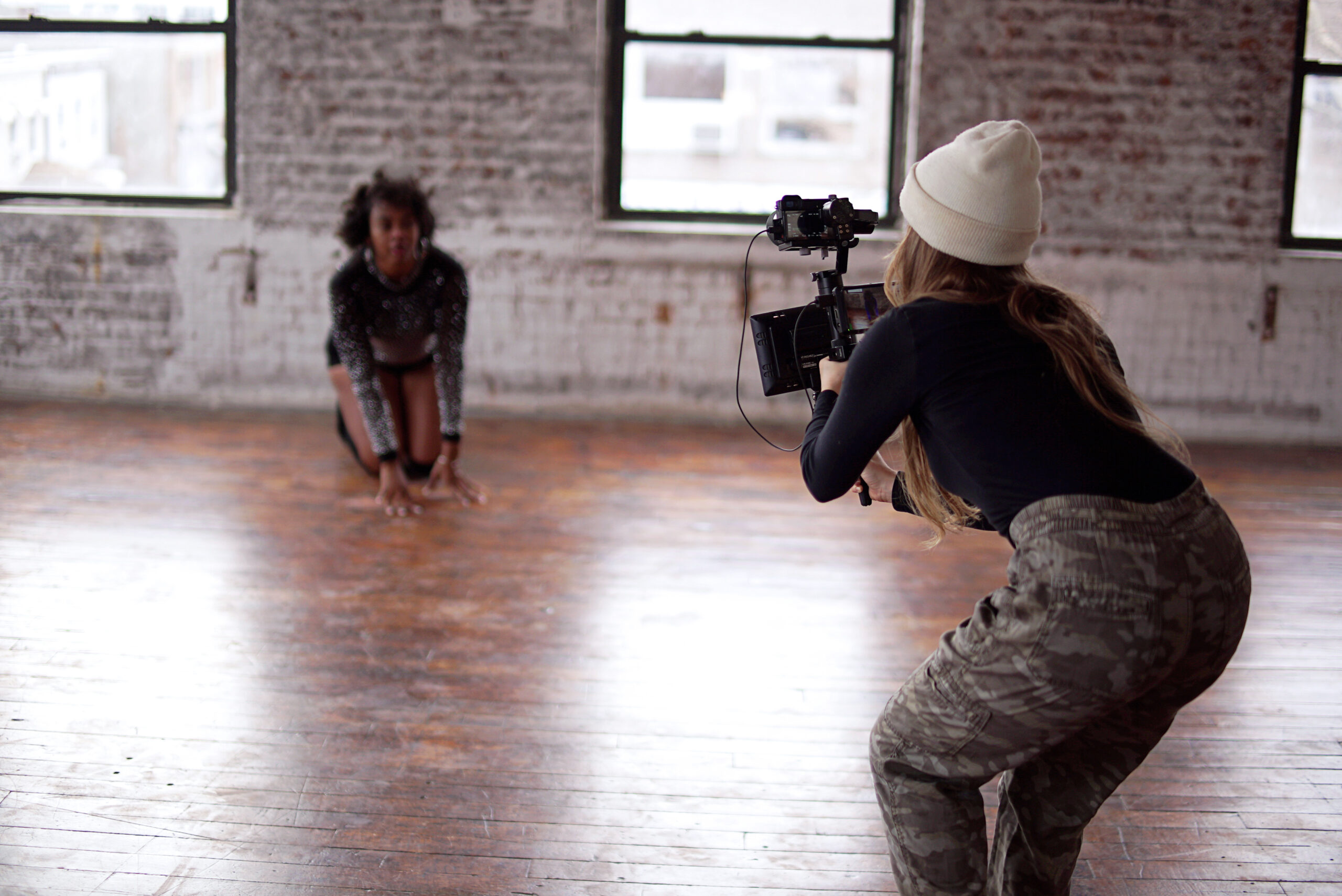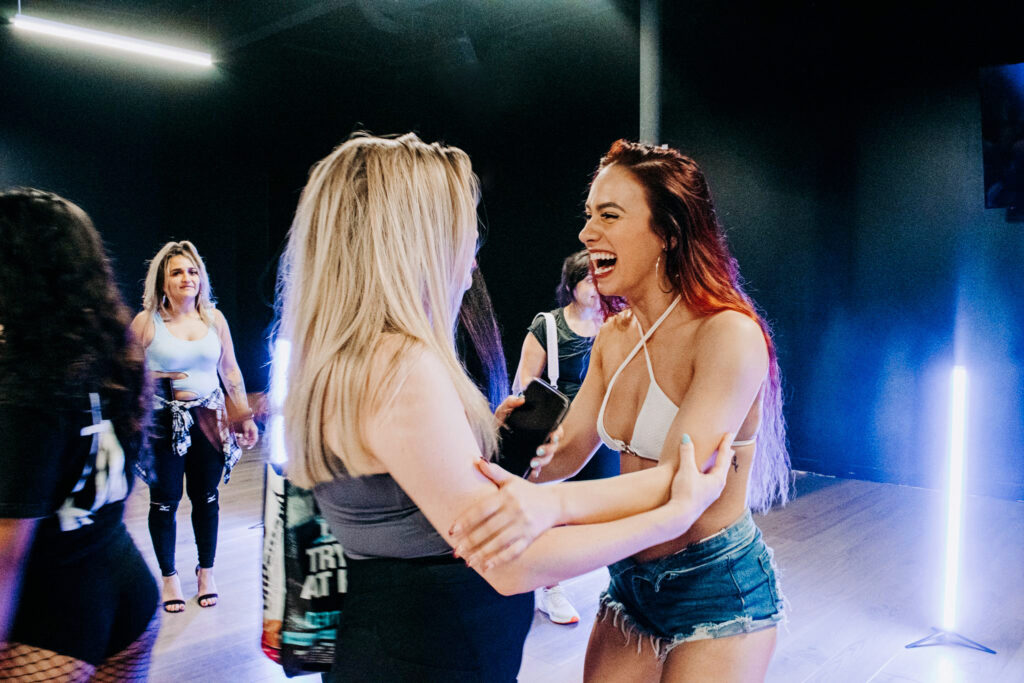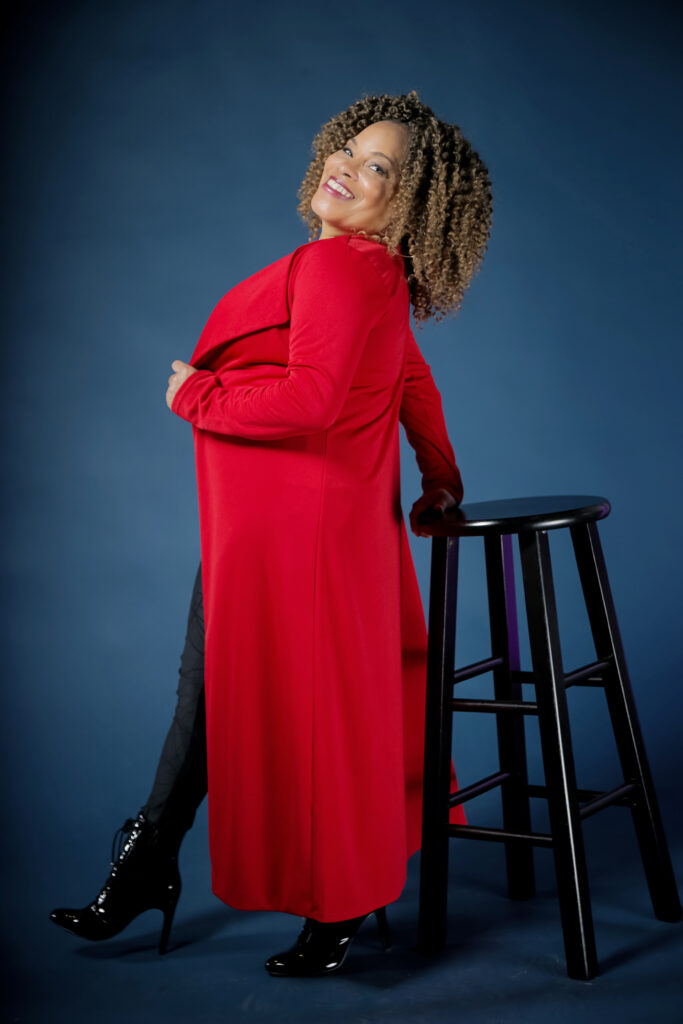
If you’ve ever scrolled through YouTube, Instagram, or TikTok, you’ve likely seen a video of a commercial dance class. For years, the films have shown some of the industry’s top movement artists performing dazzling choreography with the preternatural stage presence of pop stars.
In the past, instructors typically chose dancers to execute a combination on camera, and the video would be posted to the teacher’s or studio’s social media feeds. The individual attention from a teacher and the resulting exposure could—and still can—help launch a dancer’s career. Now, a trend is on the rise: classes with guaranteed videos for all levels, designed to help dancers improve, track progress, and present high-quality self-promotional materials to land jobs. The videos can also promote the educators’ work and help build the host studio’s reputation.
Beyond career development, video workshops encourage participants to tune in to their authentic selves, appealing to seasoned dancers and nine-to-five recreational students alike.
Creating Community
Since 2016, SassClass has offered video programs consisting of multiple dance sessions, ending with a professionally filmed video. Though the participants include beginners through professionals, founder Julia Sokol initially had novices in mind. The programs foster camaraderie, she says. “Deep bonds usually form during this experience together, and our students’ senses of accomplishment and of belonging to a team are truly incredible.”

At the beginning of 2022, New York City–based teacher Emma Rosa began adding 30-minute post-class video sessions to her intermediate/advanced-level Heels Expression classes at Brickhouse NYC. Though she had been filming all of her classes at the studio since she began teaching there in 2020, she wanted to create a more structured mini-workshop after each class to focus on camera work. She and dance teacher Kayla Maria G. created the idea for a recorded performance-experience component together. “I made this small change in order to give all students a safe space to face their fears and grow skills in front of the camera,” Rosa says.
Rosa asked her students at Brickhouse what filming practices would be the most helpful for their progress. Participants preferred an hour and a half of class with an optional recording session in groups at the end.
In Rosa’s view, the pressure to be perfect in more traditional filmed classes can hinder students’ progress. “You work hard in class, and when you get called out [for a select group], it’s a special thing,” she says. “But a lot of times, people just need the opportunity to become their best, and also to leave feeling like they were truly seen.”
Though Rosa’s students are permitted to just watch the post-class recording session, she encourages full participation, even if a dancer doubts their skill level or combination retention. For her, performing on camera enables dancers to gain proficiency and share their unique personal stories. “It’s about loving yourself in a vulnerable state and appreciating where you are at that moment, while practicing the skill of being on camera,” she says.
Rosa begins her classes by greeting each attendee. “I’ll ask, ‘Is there anyone in the room that I don’t know?’ Then I’ll go up to each person and say hi. If they want to be hugged, I’ll give them a hug,” she says. “After that, I explain how class is going to go.” Next, she leads a warm-up with stretching and isolations, followed by a short group dance exercise to help the dancers connect with their bodies. As the participants change into their heels, she guides them through a breathing exercise followed by a positive message.
“One of the hardest things is getting out of your head and staying present with your body,” Rosa says. “You can really focus on what you want to learn about yourself, and how you want to tell the story of yourself. By the time we get on camera, we’ve had an hour and a half of the message that I’ve reiterated throughout class, so the pressure is not on being perfect.”
Rosa’s video classes have catalyzed personal transformations on and off the dance floor, which she finds rewarding. “Many of my students have said that the on-camera video experiences helped to solidify their self-worth, because [by participating] they’re saying, ‘I deserve to be seen.’ ”
One female student who works in a male-dominated corporate environment became more comfortable expressing herself through her personal style. “We’ve talked specifically about how that can be attributed to the relationship she’s built with her body in my classes,” Rosa says. She sends students their finished videos for personal use, then engages with their posted class videos and photos on social media, often resharing posts in her Instagram stories.
Flying Solo
From July to October 2022, commercial jazz instructor Debbie Wilson held a solo video workshop series in partnership with dance teacher Shauna Skopek, who is also a videographer. Known as Solo Shoot Sundays, the sessions gave students an opportunity to perform one of the most recent combinations Wilson had taught in her weekly beginner and advanced-beginner Broadway Dance Center classes. The shoots were held on high-quality sets.
In class, Wilson taught the same combination on Mondays, Tuesdays, and Saturdays, allowing students time to practice. Each dancer was permitted two takes during the tapings on Sundays, and Wilson offered personalized feedback.

As many of Wilson’s students were less experienced dancers, some felt nervous at the beginning of the recording session. “I let them know that I believed in them,” Wilson says. She reminded them of their capability in past classes to help build their confidence. “Once they got through the first take, the second one was much better.” Skopek emailed students their videos, and Wilson shared clips of the footage on Instagram.
Performing without other dancers can provide a welcome challenge. “[The students] loved being able to do it as a solo, because it’s hard,” Wilson says. “When you’re in class, you could follow or look in the mirror. With the solo shoots, you can’t really do that,” she says. “You have to concentrate on yourself and on learning the choreography. A lot of the feedback I got was that it’s good for your brain and your confidence to know that you could do it by yourself.”
Coordinating Videography
Videographers who specialize in filming and editing commercial dance footage can be especially attuned to an instructor’s needs. “I work with Twin City TV, because I trust his eye,” Rosa says.
“If anything looks bad, Shauna [Skopek] will know,” says Wilson. “She’s able to say when a dancer’s movement needs to be quicker,” and, she adds, Skopek helped move the process along.
Skopek emphasizes communicating expectations about timing. “It’s important for the videographer and editor to know what the turnaround time is going to be,” Skopek says. “If you’re on a tight schedule, they need to know that sooner rather than later.”
Videographers’ rates reflect their time, experience, skill, and equipment costs. Skopek’s rate for Solo Shoot Sundays varied according to the number of participants. For other projects, her rate depends on the lengths of the shoot, editing time, and final video.
“My base rate is $300 for a one-hour shoot, plus an edited video—with basic edits—no longer than two minutes,” Skopek says. “If the video needs more editing, lots of revisions, or is longer than two minutes, I will add extra editing fees based on the amount of time I’ve spent on the video in postproduction.”
Tips for Success
Rosa advises establishing a straightforward intention for camera work in class, including stating the appropriate skill levels, to serve students well. “If I want to hold a class specifically for professional dance training, then I have to be very clear with myself and my students that that’s the purpose, so I don’t send the message that anyone can come,” she says.
Skopek recommends helping students turn their jitters into a source of strength. “When you’re dancing in solo videos, I think it’s really about living in the moment,” she says. “Use the nervous energy and channel it for good, right into the camera, to give your best performance.” She suggests that students close their eyes, listen to their music and visualize their performance before filming. While dancing, it can help to imagine themselves playing back on camera.
For videos that will be edited together from multiple takes, students should practice their stylistic choices before the shoot. “Make sure you’re hitting everything the exact same way, so that when your editor is cutting from a wide shot to a close shot, for example, there’s continuity,” Skopek counsels participants.
“Make students feel comfortable,” Wilson says. “If they don’t look good, let them know, but encourage them. The dance world is very hard. We always want people in our corner, to be on our side and to give us great feedback.”





